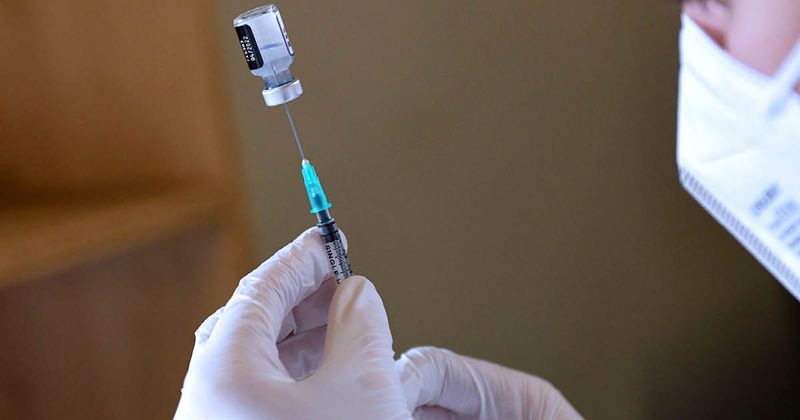Shifting ‘definition of fully vaccinated’ muddles COVID-19 vaccine efficacy data for IMIDs
An evolving definition of “fully vaccinated” has made it difficult to assess the utility and success of COVID-19 vaccines among patients with immune-mediated inflammatory diseases, a presenter noted here.

Early in the COVID-19 vaccine era, breakthrough infections were thought to be rare, Jeffrey Sparks, MD, MMSc, associate physician at Brigham and Women’s Hospital and Harvard Medical School, told attendees at the Basic and Clinical Immunology for the Busy Clinician symposium. “It was thought that vaccines would get rid of COVID, but that has not been the case,” he said. “No vaccine is perfect.”

What is understood now is that vaccines can help prevent severe disease, hospitalization and mortality. Sparks noted that the products being used have been successful at this.
However, a number of factors can impact vaccine efficacy, according to Sparks.
Even in individuals with no immune-mediated diseases, differences in immunity can have an impact. In addition, structural factors such as manufacturing, transportation and storage of the product can create variability in response. “Sometimes, an intramuscular vaccine can be given subcutaneously, which can impact response,” Sparks added.
Another factor is timing, according to Sparks. A breakthrough infection is described as being “a positive test 14 days or longer after full immunity,” but there is often uncertainty about when the exposure actually occurred.
All of these factors affect anyone who is vaccinated. But, of course, the issues are compounded in patients with immune-mediated diseases. “The obvious thing with IMIDs is that the definition of fully vaccinated has changed,” Sparks said.
Early on, it was defined as two doses. But then there was boosting, and there has been mixing and matching with mRNA and other approaches. Sorting out when, exactly, a person can be defined as being fully vaccinated is nebulous. This, in turn, has made it difficult to study so-called breakthrough infections. “The literature has not caught up on this,” Sparks said.
The presentation then covered some well-established data pertaining to impaired humoral and adaptive immunity in people with IMIDs. Sparks described issues ranging from organ damage to the impact of immunosuppressive drugs like B cell depleting therapies. “Most patients do make antibodies, but it is to a lesser extent than healthy controls,” he said.
All of this, in turn, translates into clinical outcomes. An early study published in 2021 in Annals of the Rheumatic Diseases, reported on 16 breakthrough infections in patients with IMIDs, observing that medications that impact humoral immunity — rituximab (Rituxan, Genentech), mycophenolate mofetil, tacrolimus and methotrexate among them — were present in most cases. Six of the 16 patients died. “This showed that breakthrough infections can be symptomatic and it can be severe,” Sparks said.
Similar data have been observed in EULAR case series and findings from the Global Rheumatology Alliance database.
If there is one key caveat in interpreting these findings, it is that many of the studies were conducted during delta or previous surges. “Then omicron came, and it is a completely new ballgame,” Sparks said.
As omicron subsides and the next variant may or may not emerge, Sparks stressed that ongoing studies investigating when to cease and restart immunomodulatory medications as a function of COVID-19 vaccination are required.
Sparks closed by looking to the future. There is hope that an intranasal vaccine product may be a welcome addition to the current armamentarium, he said. The path from the nose to the lungs may be different than the path from the arm to the lungs, leading to more robust immunity in patients with IMIDs. They could alter the parts of the immune system that are activated, and the rate at which the immune response moves through the body.
“The intranasal vaccines provide more mucosal immunity, while the intramuscular vaccines provide less mucosal immunity,” he said.
Also looking ahead, Sparks suggested that the next phase of COVID-19 vaccination in patients with IMIDs should take a different tack. “Maybe there is a shift toward preventing severity of infection rather than preventing infection itself,” he said.

